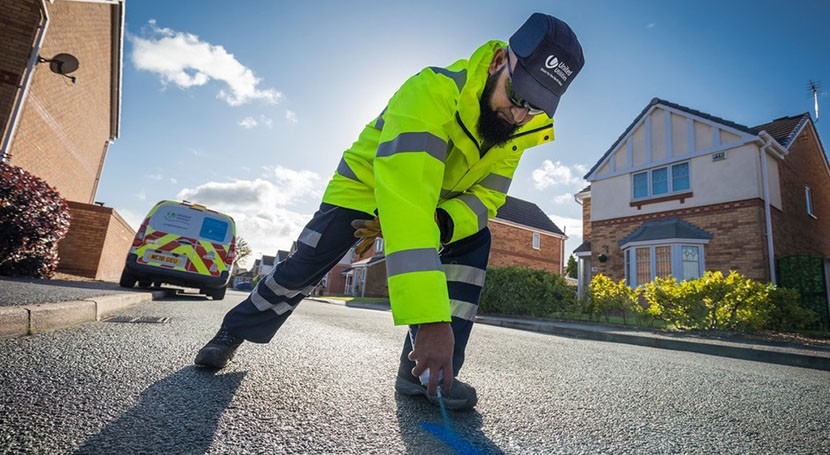Water Leak Detection: How to Recognize and Deal With Leaks Before They Create Damages
Water Leak Detection: How to Recognize and Deal With Leaks Before They Create Damages
Blog Article
Innovative Solutions for Early Discovery of Water Leaks in Buildings and Facilities
As the integrity of structures and framework is extremely important, the difficulty of very early discovery of water leakages has spurred innovative services that promise to change the means we guard versus possible problems. From sophisticated leakage detection technologies to the implementation of IoT sensors for real-time surveillance, the landscape of leak avoidance is progressing swiftly. Machine learning formulas use a glance into the future of leak prediction, while thermal imaging offers a non-intrusive approach for determining hidden leakages. Automated water flow evaluation systems are reshaping how leaks are identified and resolved, paving the method for a positive approach to water leakage detection. Each of these solutions holds the crucial to making sure the dependability and long life of our built atmosphere, motivating a change in the direction of a much more lasting and effective future.
Advanced Leak Detection Technologies
Advanced leak detection innovations, equipped with cutting-edge sensors and formulas, play an essential function in promptly recognizing and determining water leakages in different setups. Electromagnetic sensing units can determine modifications in electromagnetic areas created by water, providing yet another layer of leakage discovery capability.

IoT Sensors for Real-Time Monitoring
In the realm of modern water leakage discovery, the assimilation of IoT sensing units for real-time surveillance stands for a critical advancement in boosting positive leak detection capacities. These sensors use continuous monitoring of water systems, giving real-time data on water flow prices, stress variants, and temperature modifications. By leveraging IoT modern technology, these sensors can find also the smallest anomalies in water usage patterns, enabling early identification of prospective leaks prior to they intensify into major issues.
IoT sensing units send information to a central system, where advanced algorithms assess the information and generate alerts or notices when irregularities are detected. This real-time surveillance ability permits homeowner or center supervisors to immediately address leaks, lessening water damages, reducing repair service costs, and saving water resources.
Furthermore, IoT sensing units can be integrated with building monitoring systems, enabling computerized responses to found leaks, such as turning off water valves or turning on pumps to mitigate the effect of leakages. On the whole, the implementation of IoT sensors for real-time tracking significantly boosts the performance and performance of water leak discovery in buildings and infrastructure.
Equipment Discovering Algorithms for Leak Prediction

One trick advantage of utilizing machine discovering for leak prediction is its ability to his explanation constantly find out and improve its precision gradually. As more data is gathered and fed right into the algorithm, it can improve its forecasts and adjust to changing conditions, ultimately raising the dependability of leakage discovery systems.
Additionally, device learning algorithms can aid in determining subtle indicators of leakages that may go undetected by conventional monitoring methods. water leak detection. By assessing intricate information collections in real-time, these algorithms can provide very early cautions and signals, permitting prompt intervention and precautionary maintenance to reduce possible water damages and linked prices
Using Thermal Imaging for Leakage Detection
Thermal imaging modern technology provides an appealing technique for finding water leakages in numerous systems and frameworks. By making use of infrared radiation and temperature level variances, thermal imaging video cameras can determine concealed leaks that are not quickly visible to the naked eye.
One of the key advantages of thermal imaging for leak detection is its non-intrusive nature. Unlike traditional methods that may call for damaging right into wall surfaces or floors to locate leaks, thermal imaging permits non-destructive testing. This not just conserves time and minimizes expenses but also minimizes disturbance to the structure or framework being examined. Furthermore, thermal imaging can rapidly scan large locations, supplying an extensive review of prospective leak resources in a timely manner. Overall, using thermal imaging modern technology improves the performance and accuracy of water leakage detection, making it an important device for preserving the integrity of structures and facilities.
Automated Water Circulation Analysis Systems
Exactly how can automatic water circulation evaluation systems revolutionize the discovery and management of leakages in various systems and frameworks? Automated water flow evaluation systems offer an aggressive method to leakage detection by constantly keeping track of water circulation prices and patterns. By establishing standard information, these systems can rapidly recognize discrepancies that might suggest a leak, allowing punctual intervention to protect against extensive damages.
These systems use innovative formulas to analyze real-time information and give immediate signals when abnormalities are identified, enabling speedy activity Get More Info to be taken. Additionally, automated water circulation evaluation systems can be incorporated with structure administration systems or IoT systems, boosting total performance and making it possible for remote monitoring abilities.
In addition, the information accumulated by these systems can be made use of for anticipating upkeep purposes, assisting to determine potential weak points in the infrastructure before leaks take place. On the whole, the execution of computerized water circulation evaluation systems can dramatically boost leakage detection and management practices, inevitably bring about set you back financial savings, minimized water waste, and enhanced sustainability in buildings and framework.

Final Thought
To conclude, the assimilation of advanced leak detection modern technologies, IoT sensors, artificial intelligence algorithms, thermal imaging, and automated water circulation evaluation systems provides ingenious solutions for very early discovery of water leakages in structures and facilities. These innovations make it possible for real-time tracking, prediction of leaks, and effective click here for more info detection methods to avoid water damage and wastefulness. Applying these services can aid in maintaining the stability and sustainability of water supply in numerous settings.
Report this page